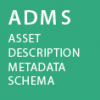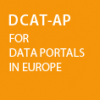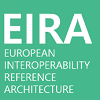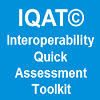Recommendation 30 | Interoperability layer: Semantic interoperability
Perceive data and information as a public asset that should be appropriately generated, collected, managed, shared, protected and preserved.
Solutions
| List of all available solutions that implement this recommendation |
|---|

|
ADMS contributes to the perception of data as public data by allowing its users to link semantic assets to one another in cross-border and cross-sector settings. |

|
The Big Data Test infrastructure departs from the assumption that public data is an open data and identifies ways in which public administrations can reuse this data to deliver better public services. |

|
CIRCABC supports public administrations on securely exchanging and storing their information. |

|
Context Broker enables the integration of data from multiple systems and supports organisations to display and understand their data. |

|
The use of Core Vocabularies contributes to proper management and sharing of public data. |

|
The use of CISE data models and standards helps public administrations to treat maritime data as a public asset that should be appropriately managed, shared, and preserved. |

|
DCAT-AP contributes to the perception of data as a public asset by enabling the exchange of descriptions of datasets (metadata) among data portals. This facilitates the search and identification of relevant data for one's needs. |

|
eArchiving aims is to properly describe, transmit and preserve digital information. |

|
By being an online database of information constantly updated with the help of the Member States, eCertis allows this information to become a public asset that is appropriately generated, collected, managed, shared, protected and preserved. |

|
Any Member States interested in fully harnessing the eDelivery building block have to perceive data as public asset that should be appropriately generated, and exchanged. |

|
By allowing the sharing of information across border, eID promotes the perception of identity data as standardised data, which should be properly managed. |

|
The semantic view of EIRA takes into account the existence of data and open data policies. |

Location Framework Blueprint
|
There are several instances in the EULF Blueprint where public administrations are encouraged to make the most out of their public data. For instance, Recommendation 4 stipulates that public administrations should make effective use of location-based analysis for evidence based policy making. |

|
EUSurvey is based on open specifications. |

|
The IQAT assesses to which extent the process of appropriately generating, collecting, managing, sharing and protecting data was applied when operating the solution. |

|
Terminologies are considered as public assets that are to be shared and reused. |

|
The ESS Service Catalogue helps to foster the view of data as a public asset that should be appropriately managed. |

|
PMKI aims to share maintainable and sustainable Language Resources making them interoperable in order to support language technology industry, and public administrations, with multilingual tools able to improve cross border accessibility of digital services. |

|
The Re3gistry contributes to semantic interoperability by facilitating the exchange of data through systems and interfaces using common reference codes. |

|
Thanks to the use of the Reference Architecture, public administrations can treat data contained in eDocuments appropriately, ensuring its interoperability and easy sharing. |

|
Registry of Registers allows public officials to ensure that their public data is collected, managed, shared, protected and preserved in a standardised way. |

|
The ESS Statistical Enterprise Architecture ensures that statistical data is treated as a public asset that should be appropriately generated, collected, managed, shared, protected and preserved. |
|
IMAPS solution v1.2 |
Question D2 of the Service Delivery section of the IMAPS questionnaire assesses to which extent public services are based on existing open semantic standards and specifications. |
|
SIMAPS solution v1.0.0 |
SIMAPS assesses the behavioural aspects of a digital public service, from the semantic interoperability viewpoint. Question D7 of the Service Delivery section of the SIMAPS questionnaire assesses whether semantic formats (Linked Data, RDF) are being used as a data format for data delivered by the public service. |
|
OpenPM² |
OpenPM² defines the relationships between strategy, project, programme portfolio and operations. |






